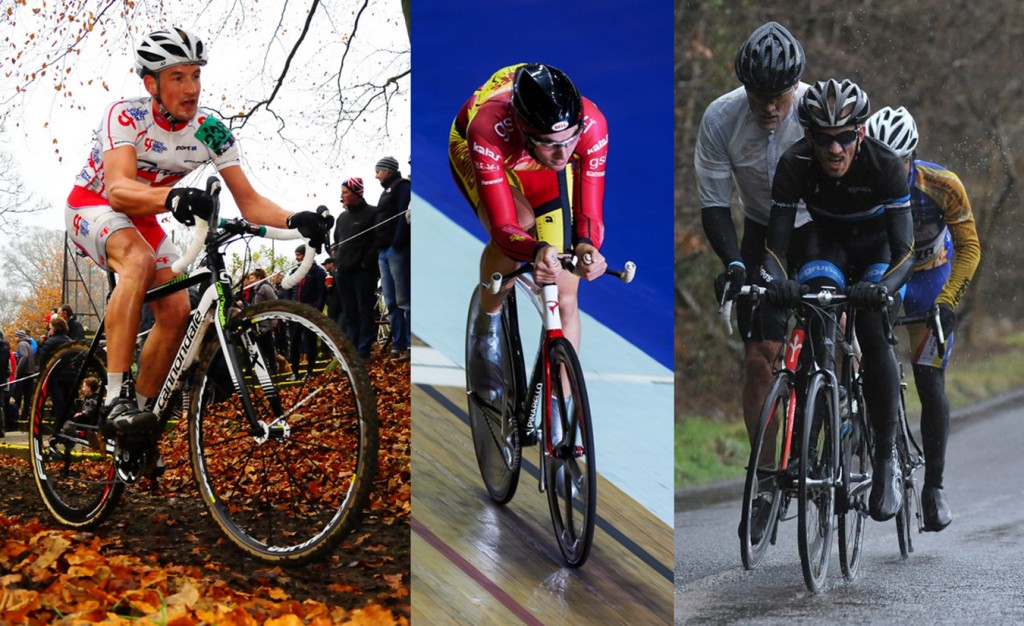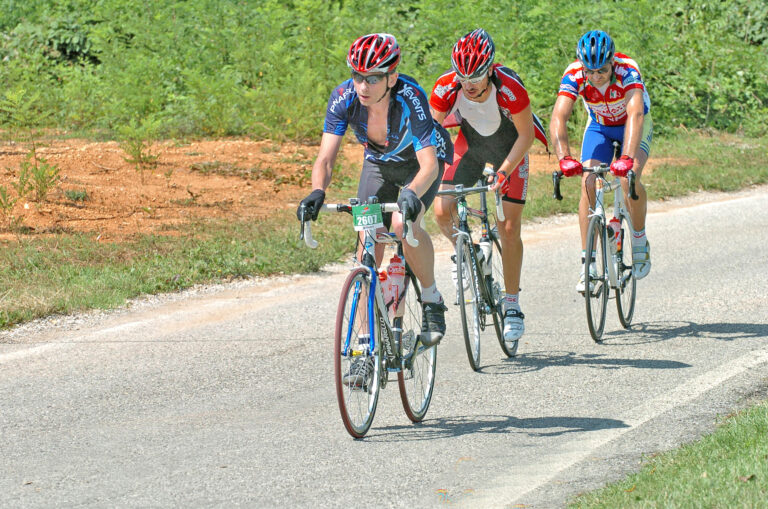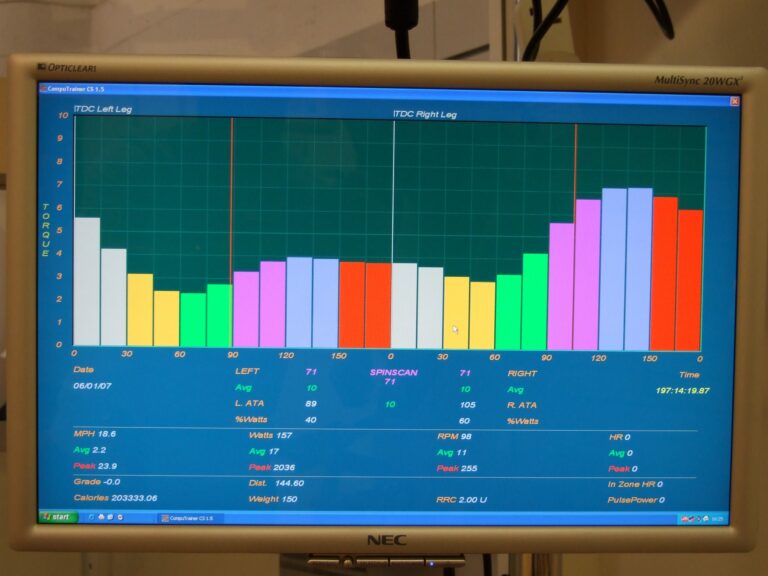
There are a number of physical attributes, which we each possess to greater or lesser degrees, that dictate our aptitude for the sport of our choice. These are the components of fitness and having a rudimentary understanding of what they are, and what kind of emphasis your particular discipline – here cycling – places on each of them, will allow you to develop them in specific training sessions and become a better rider. Whatever your standard and whatever your goals, the simple fact is that developing your components of fitness will make you a better rider, faster.
One of the biggest misconceptions in sport is that simply by taking part, you’ll become good at it. While you might see some initial improvements following this approach, you’ll quickly reach a plateau way below your potential. If you want a clear-cut example of this look at the riders in your club who have been doing the same weekend rides, with the same groups, year after year and shown little improvement in all that time. There’s nothing wrong with that; some riders are more than happy just to get out each weekend and turn the pedals, but look at the title of our series. It’s ‘Training for Results’ and the fact that you’re reading this means you want to be a better rider, right? That means you need to stop ‘just’ riding your bike and start riding with a purpose. In other words, start training.
In order to see genuine improvements over and above the limited skills and fitness levels that simply riding your bike will give you, you need to target improvements in the individual, physical characteristics that you need in order to ride your bike well. These are the components of fitness. All sports have their own components of fitness. You can imagine that the physical requirements for a gymnast would be quite different to those of a track sprinter on the athletics track and there wouldn’t be much point, for example, in a parallel bars gymnast working on the components of fitness required to run 100 metres in under 10 seconds. So cycling, like all sports, has its own components of fitness.
Also, as with other sports, the various disciplines within the sport itself mean that the components of fitness needed are very discipline-specific. Again, using a runner as an example, you would expect a marathon runner’s training programme to be quite different to Usain Bolt’s, despite the fact that they are both runners.
So, cycling demands that its individual components of fitness are discretely developed to a higher or lesser degree depending on what your chosen discipline is. Clearly, a BMX racer with an explosive event lasting for around one minute would require a different balance of the components of fitness to a distance time triallist, who might be looking at a sustained performance over several hours.
You can, we hope, see then that identifying the components of fitness specific to your event, and working to improve them, is a very effective way of utilising some of your training time and improving your performance. This is NOT the sole preserve or racers or compulsive training addicts. All cyclists, whatever their standard, will see results by improving the right components of fitness, whether that means riding faster or simply being able to comfortably stay on the bike for longer.
Over the next couple of weeks I’ll outline what the six components of fitness most important to cyclists are and highlight to what degree they apply to the various cycling disciplines and what kind of training you might employ in order to improve on them.
The components of fitness
1: Aerobic Endurance
What is it? This is the ability to sustain a comparatively low level of intensity for prolonged periods of time. As you can imagine this is the bedrock of all endurance events and it’s important here to understand the definition of an endurance event. An endurance event is anything that lasts upwards of a minute or so. Sounds ridiculously short, doesn’t it, but basically anything over the amount of time where you have to consider pacing yourself, and are not able to go flat out, is an endurance event.
Typical events: Road Racing, Time Trials, Cyclo-cross, MTB races, Sportives, leisure riding – just about all forms of cycling have an aerobic endurance requirement. Even things like short track sprints and BMX races which are less than a minute have an aerobic endurance component because the events, though short in themselves, are usually run in heats on an elimination basis, so riders have to perform repeatedly over several hours.
How do I improve it? This is the classic ‘base training’ you hear so much about. It involves long rides at sustainable pace. But remember that training is specific to the kind of riding you do, so if you only ride long and steady, you’re just training yourself to ride long and steady. If you want to ride long and fast then you’re going to have to integrate periods of higher intensity work into your programme. This still comes within the compass of aerobic endurance training.
2: Strength
What is it? The amount of ‘force’ you can produce. In cycling terms this means, quite literally, how hard you can push down on the pedals.
Typical events: All sprint events require high levels of absolute strength. So it’s a key component of fitness for things like BMX racing and track racing. This is why exponents of those events spend high amounts of time in the gym as well as on the bike. Most mere mortals in road-based events would have a higher relative strength than sedentary people but they don’t require high levels of absolute strength. Clearly, a road sprint specialist like Mark Cavendish requires a higher level of absolute strength but in an endurance event like road racing, there is also the requirement to get to the end of his race (repeatedly, and on consecutive days in the case of a stage race, so you can understand why he’s always praising the efforts of his team in getting him there).
So, a road race sprint specialist needs to be well developed in both aerobic endurance and strength components. Good strength conditioning to a certain level is also advisable for less ambitious endurance riders, as the stronger a muscle or group of muscles, the longer they take to fatigue. There is also good contemporary research evidence to show that strength training has many benefits for endurance riders as well as sprint specialists but we’ll go into that in more detail later in this series.
How do I improve it? The bicycle is one of the most efficient energy convertors known to man. For a relatively little effort you can go a long way; this does, however, mean that in terms of strength development it’s not very “fit for purpose” insofar as it doesn’t offer a great deal of resistance. Even riding in the very hardest gear will still see the pedals move away from you when you push against them. So you need to develop strength in the gym, preferably against an object that doesn’t move away from you… the floor being a perfect example. Squats and squat-type exercises are perfect for developing strength and most riders would benefit from a rudimentary 20-30 minute strength programme done twice a week at home or in the gym, working on strength exercises that include squat patterns.
A good idea is to include strength exercises during the ‘off’ period of your riding year (that’s winter unless you’re a cyclo-cross racer) before switching to an on-bike, cycling-specific strength programme in the spring as your chosen events or more serious riding approach.
Here is a typical example of a progressive on-bike strength programme:
12-week On Bike Strength Programme.
Where: Road or Turbo, similar conditions, once per week.
Warm up for 20mins, get the legs spinning nice and fast in an easy gear.
Using the big ring at the front, select a gear three down from the top at the back. Ride for 1 minute in this gear at as high a cadence you can sustain to achieve an effort level of 6 or 7 on a scale of 1-10, so it’s pretty moderate. Then ride for 1 minute very easy spinning. Next, drop it into one gear harder than your initial gear (so 4 down from the top) and again, ride for one minute at the same level of intensity. Then ride for 1 minute very easy spinning. And so on – do 1 minute ‘on’ followed by 1 minute ‘off’ until you reach the hardest gear on the bike. On completion, spin an easy gear for a few minutes to finish the session.
Don’t be tempted to push hard in this session, it’s about the ‘strength’ not the cardiovascular development. By sticking to the same intensity in each interval your cadence will drop as you go through the gears, so you’re progressively pushing harder.
Over 12 weeks the session develops like this:
Week 1: 1 minute on, 1 minute off
Week 2: 2 minutes on, 2 minutes off
Week 3: 3 minutes on, 3 minutes off
Week 4: 4 minutes on, 4 minutes off
Simple so far but now, it gets interesting…
Week 5: 4 minutes on, 3.5 minutes off
Week 6: 4 minutes on, 3 minutes off
Week 7: 4 minutes on, 2.5 minutes off
Week 8: 4 minutes on, 2 minutes off
Week 9: 4 minutes on, 1.5 minutes off
Week 10: 4 minutes on, 1 minutes off
Week 11: 4 minutes on, 30secs off
Week 12: 4 minutes on, no time off – go straight through the gears in 4 minute intervals
And that’s it – you can see that, week by week, you’re increasing the time you push each gear up to 4 minutes, then the ‘off’ time reduces so you get less time to recover. A very good session for developing cycling-specific as opposed to absolute strength.
Next week we’ll look at the next two components of fitness, which are Speed and Power.
About the author:
Huw Williams is a British Cycling Level 3 road and time trial coach. He has raced on and off road all over the world and completed all the major European sportives. He has written training and fitness articles for a wide number of UK and international cycling publications and websites and as head of La Fuga Performance, coaches a number of riders from enthusiastic novices to national standard racers.
Contact: [email protected]





